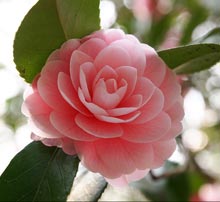 In the weeks since I last wrote an article for this wonderful publication, we have witnessed our streets, yards and homes flooded with water; trees and power lines blown to the ground in another hurricane; complete devastation to huge islands in the Caribbean; vast destruction to property and the environment and great loss of human life in California fires.
In the weeks since I last wrote an article for this wonderful publication, we have witnessed our streets, yards and homes flooded with water; trees and power lines blown to the ground in another hurricane; complete devastation to huge islands in the Caribbean; vast destruction to property and the environment and great loss of human life in California fires.
I just received photographs of a friend’s magnificently landscaped yard and their lovely home in the upstate, recording the damage by the passage of Hurricane Irma a hundred miles to the west. All the majestic trees had been laid flat, and the carefully laid out gardens, full of beautiful shrubs, bulbs, and perennials as well as small trees, had been crushed or ripped up or broken apart by the storm.
The last of the group of pictures had been taken exactly a month later. Most of the debris had been removed, only a few trees awaited being cut up and taken away, and the roof of the carport still needed replacement. But the most astonishing thing was to see what was happening to the garden.
Although many of the shrubs and small trees had lost limbs or had been bent over, and although clumps of perennials all over the garden had been beaten to the ground, and despite the complete loss of several treasured specimen shrubs - despite all this, there was green growth happening everywhere.
The downed trees’ absence had opened up the heavily wooded lot to the intense rays of direct sun. Photosynthesis was happening everywhere; broken limbs sprouted new growth; long dormant seeds were sprouting little oaks and hemlocks; perennials flattened to the ground were sending up new growth to take advantage of the life-giving sunlight.
To be sure, for many plants, long used to the shaded, protected conditions beneath the leafy canopy of the old woodland, the new intensity of the light and the lack of moderating influence on temperature extremes that the cover had provided would make the new circumstances too severe to survive. Others, though, would leap at the opportunity to grow and flourish.
These sun-loving plants would replace the weaker ones; they would adapt to the new conditions and alter dramatically the kinds of plants that define the space.
Of course, opportunists are often obnoxious interlopers. There will be a huge influx of alien and undesirable species also seeking to exploit the new conditions. The garden will require vigilance in keeping a balance between welcoming new growth and purging all the new weeds that appear.
The lesson, though, is that we gardeners, we humans, have to yield to the infinitely superior forces of nature. We will always find that no matter our lofty intentions, nature has its own ways of dealing with a gardener’s hubris.
Hubris seems often to creep into my narratives of the gardening experience. There is a reason, of course: to garden is to place hope and hubris above observed truth. We think we know what we are doing, that we can create the conditions under which our plants will thrive. Even a lifetime of experience succumbs to the absurd confidence that, this time, it will all work out the way I plan.
Six weeks ago, I rediscovered in the garden a treasured and uncommon shrub I thought I had lost a decade before. It had survived and grown amazingly on its own in a hidden corner in the back of the yard, a rarity originally from the Himalayas and southeast Asia. This was the Hydrangea aspera, one which I remember finally convincing those wonderful sisters at the old Garden Gate nursery on Boundary Street to part with.
I was so thrilled at finding the plant surviving in the garden that I carefully removed several cuttings to root, nice small branches I could cut up for rooting in my little greenhouse. At the same time, I took similar branches from a special Oakleaf hydrangea to root alongside.
Hydrangeas are easy to root as cuttings: I used rooting hormone, placed about eight cuttings of each variety in their little trays, covered them, and waited. When I made my small cuttings from those branches I had cut, I was left with a couple of leafless branches too big to use for rooting, but too special to throw away. I just laid them on top of the spent soil in an old window box planter I had and poured a thin layer of compost over them, then left them in a shady corner in the garden.
Over the next month, I watched my expertly made cuttings die, one by one. They had tried to root, but each failed.
Yesterday, I happened to notice the old window box and remembered those sticks I had left there. When I checked, all of the sticks had rooted in several places - with no help from me, obviously! - providing me with as many successfully rooted plants as I had lost in my carefully watched trays. Nature, thank goodness, decided to take over from my demonstrated incompetence.
This week I was looking at the spindly remnants of the summer flowering Formosa lily. They reach six or eight feet tall, and they’re topped with a bunch of big white trumpets in a great display, although they often fall over from the top-heavy weight of the bloom. They seem to spread everywhere in the garden, which would be a nuisance if they weren’t so lovely and if they weren’t so easy to pull up. It’s in the more unkempt areas of the garden, where they can grow unseen and unmolested, that they can reach critical mass - many dozens of these gorgeous bloom stalks at the peak of bloom.
 Those white lily trumpets of a month or two ago have now turned into candelabras of seed pods, held vertically at the top of the huge stem. These are pretty majestic as well, and a mature plant will have a substantial head of seedpods.
Those white lily trumpets of a month or two ago have now turned into candelabras of seed pods, held vertically at the top of the huge stem. These are pretty majestic as well, and a mature plant will have a substantial head of seedpods.
The real surprise, though, comes when the pods mature and dry. They split along the seams at the top end of each pod, and slowly they release the seeds into the wind. There are literally thousands of seeds in each pod, and each seed is capable of making another eight-foot lily plant in just a few years.
That’s what I mean. My own meager efforts at gardening are pitiable compared to the incomprehensible efforts of nature herself. The most horrendous arid desert will find itself suddenly blooming in a rainbow of flowers after a sudden rain. The perpetually frozen tundra keeps hidden a trove of minuscule plants, mosses, lichens which perfectly accommodate themselves to the impossible conditions. It is not we who will survive the nuclear winter, the flooding oceans, the poisoned air that our actions predict. Rather it is nature herself who wins, taking little note of the momentary blip that will have been the Anthropocene.







